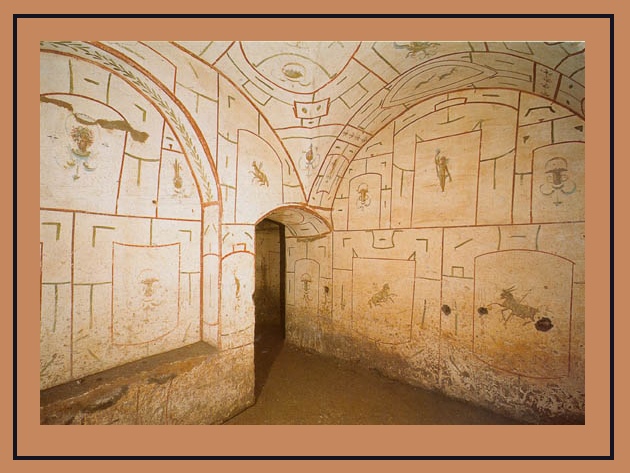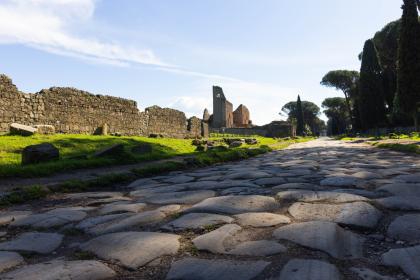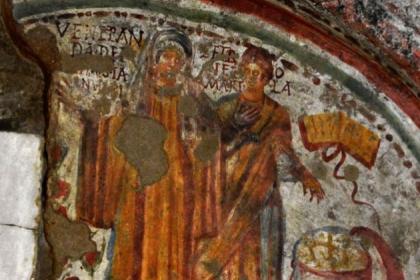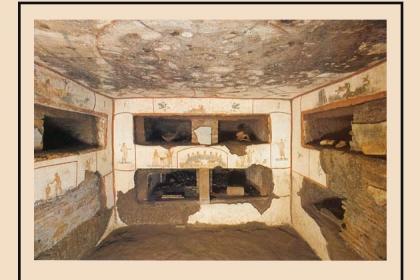
The Catacombs of San Sebastiano were used as a burial pagan place, then at the end of the 2nd century, they were transformed as a Christian Necropolis dedicated to the Saints Peter and Paul. Only in the 4th century did the catacombs take the current name which derives from the name of the Saint placed here after his death (298).
The young Sebastian had preferred to suffer the tortures of the arrows rather than abjure the Christian faith, but not having died, he had challenged the Emperor Diocletian as soon as he had recovered his strength. He had had him taken to the Palatine Hippodrome where he was killed with a stick and his body thrown into the Cloaca Maxima.
He miraculously appeared in a dream to the matron Lucina, who mercifully collected his mortal remains and carried them to the catacombs that took his name. Originally the cemetery was called “ad catacumbas”, that is it’s near at valley, due to the pozzolana quarries existing on this area.
The toponym “catacomb” was then extended to indicate directly the Christian underground cemeteries.
The visit to these catacombs includes the access to certain sectors only: in the deepest region, from the cubicle of Jonah, so named for the 4th century frescoes that decorate it and depict 4 scenes relating to the life of such a biblical character, you arrive at the crypt of San Sebastiano and at a pitch where there are 3 pagan mausoleums later used also by Christians.
The Appian Way

 Condividi
Condividi
Catacombs of Domitilla

 Condividi
Condividi
The Catacombs of Saint Callistus

 Condividi
Condividi
Information
Daily from 10.00 to 17.00
Last admission 16.30
Closed 25 December, 1 January
Annual closing period: December
 Condividi
Condividi
Location
To find out about all accessibility services, visit the Rome accessible section.











































